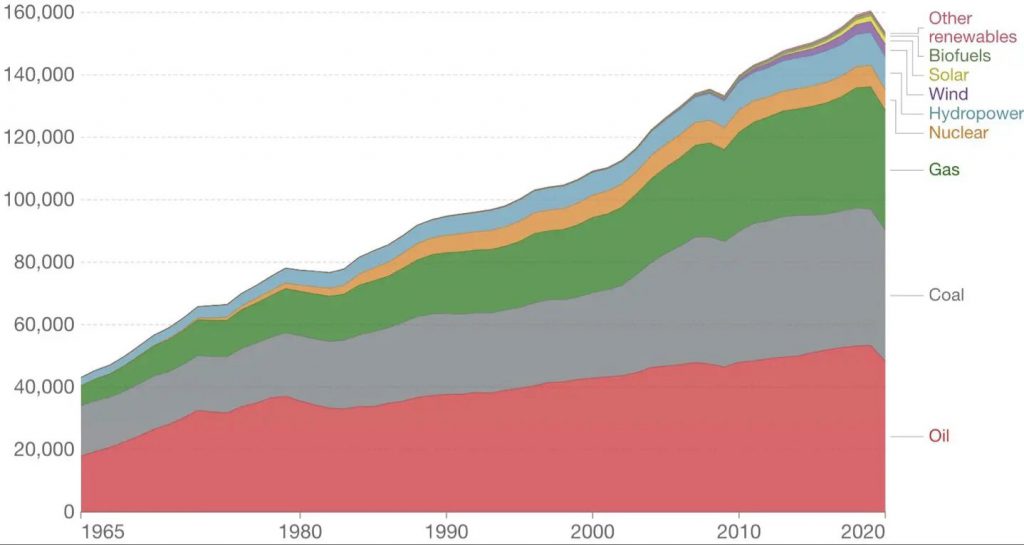Bitcoin has been able to gauge the interest of a vast group of people who either want to know about its price volatility or the mining impact caused by the digital asset. While volatility is a part of any market, environmental factors may not be. Some think that the focus shifting to crypto mining was just due to the hype around it and regulations. Tech entrepreneur and quasi-environmentalist Daniel Batten recently argued that Bitcoin mining incentivizes building renewable energy plants and helps decarbonize power grids.
Batten appeared in the latest podcast from Brave New Coin where he reinforced his point of BTC mining driving to 70% renewables-based energy consumption by 2030.
With Fossil fuels remaining the main focus of consumers, even the growing renewable energy sources will not aid this condition. As per IPCC [Intergovernmental Panel on Climate Change], if we fail to massively switch to the use of renewables, there would be runaway climate change. Which should be the talking point.
Per Batten, Bitcoin mining drives increased demand for electricity and as a result, investments in renewable energy plants. Since mining does not require a continuous source of energy, it can be directed to locales to take advantage of the excess generation of renewable electricity. However, Batten noted that a point of concern was the small size of the industry which would make it difficult to incentivize all the renewable energy required.
He stated,
“My only real concern is ‘Is Bitcoin mining requiring enough electricity to help us build up that grid to the extent we need to?“
Bitcoin miners in Norway were already a big example of using clean energy for mining. Given the country’s access to hydropower and other renewables, 100% of electricity generated in Norway was from renewables. According to data collected by CoinShares, miners use this renewable energy to produce about 1% of the total BRC hash rate. Therefore, if this was to be implemented in countries like the United States and Kazakhstan, where Bitcoin mining is high, it could reduce the reliance on fossil fuels.
In fact, Texas is already looking into the utilization of flexible data centers which can switch from the public grid to temporarily generating its clean energy from dedicated energy generators. This will reduce the stress on the grid during periods of high retail demand. Meanwhile, many others were focusing on hydropower, like the Managing Director of Miami-based XBTO Group’s Bitcoin mining operation XBTO, Mas Nakachi.


Nakachi reportedly stated that “hydropower is one of the most reliable renewable energy sources available to us.” While wind and solar energy are variables, electricity can be generated through flowing rivers and used throughout, per the MD. He added,
“Harnessing hydroelectric power has remained an effective mechanism to maintain the most efficient mining possible.”
A January report by the Bitcoin Mining council was already reflecting the switch to renewables as it noted that by Q4 2021 global Bitcoin mining industry ran on an estimated 58.5% renewable energy. It is clear that Bitcoin and other crypto miners will have to prioritize the use of clean energy before a regulation threatens to ban such activities or replace them with proof-of-stake [PoS].





